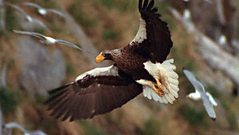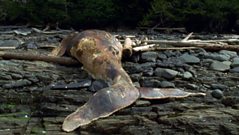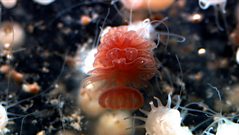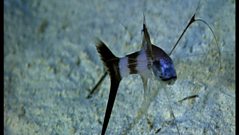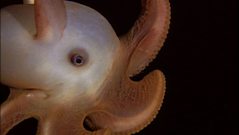
Floundering fish
Each year for hundreds of miles along the Newfoundland coast, a million tonnes of capelin fish throw themselves onto beaches. Timed with the tide, these fish synchronise their breeding, so that the males fertilise the eggs being left in the sand by the females. Most of the capelin not taken by the large flocks of opportunistic birds die anyway during the event, but not until they've left their eggs in the sand. Other capelin populations lay their eggs in the ocean, so why do the Newfoundland capelin risk spawning on land? It seems that the eggs may develop quicker on land than in the colder surrounding waters. The huge shoals also provide the abundance of food needed by seabirds when they assemble to breed.
Duration:
This clip is from
Featured in...
![]()
大象传媒 Nature
Be captivated, informed and inspired by the world's wildlife.
More clips from Coasts
-
![]()
A Cruel Lesson
Duration: 05:03
-
![]()
Galapagos lizards
Duration: 04:00
-
![]()
Lunch on the wing
Duration: 01:45
-
![]()
Whale of a feast
Duration: 01:53
More clips from The Blue Planet
-
![]()
A Cruel Lesson—Coasts
Duration: 05:03
-
![]()
Small beginnings—Seasonal Seas
Duration: 01:07
-
![]()
Deep seabed—The Deep
Duration: 02:11
-
![]()
Dumbo octopus—The Deep
Duration: 00:50




